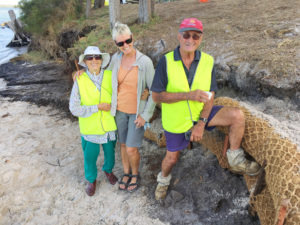University of Queensland student writes thesis titled Exploring Changes in Sediment Distribution and Quality in the Pumicestone Passage Between 1980 and 2018.
Sofie Thielemans did the research as part of her program towards a Bachelor of Engineering (Hons) in Environmental Engineering.
Pumicestone Passage is a tidal waterway of high ecological and recreational value, located in Northern Moreton Bay in South-East Queensland. In the last century-and-a half, the Passage has come under pressure from rapid urbanisation, leading to concerns regarding the implications of land use changes and catchment degradation on the waterway health.
A comparative study was conducted in order to establish current sediment quality and distribution in the Passage, and compare this to a study performed in 1980. This has shown that overall, the Passage has experienced a significant increase in mud distribution, attributed mainly to extensive land clearing and construction of urban development. However, further comparisons with a 2015 study have indicated that some sites are experiencing decreases in mud. A potential driver identified for this may be changes in catchment management.
A significant reduction in metals, and no detectable pesticides were further identified, highlighting the effects of land use changes on these.
Overall, the study findings indicate that Pumicestone Passage is a highly variable environment, where a complex range of systems affect sediment quality and distribution. The study provides a baseline data set, relevant for future comparison in the face of continuing urbanisation.
The full report is available for viewing online or download HERE.


